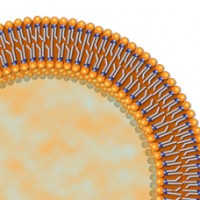When phospholipids (composed mainly of fatty acids) are placed in an aqueous solution under special conditions, their unique molecular structure forces them to form microscopic bubbles. These tiny spheres, called liposomes, have double-layered membranes almost identical to the bilayer membranes that surround most cells in the body. As liposomes are formed, they capture and enclose whatever was dissolved in the starting solution.
Because of their fatty acid composition, liposomes are not soluble in water and are not susceptible to breakdown in the stomach. Because of this composition — along with their infinitesimal size — liposomes can facilitate absorption of a large percentage of their encapsulated payloads before any significant enzymatic breakdown of the lipids takes place in the intestine.
As soon as they enter the small intestine, they slip through the intestinal wall without the need of the special molecular portals (receptor sites). Liposomes also penetrate cell membranes in the same efficient manner. These and other properties make them ideal for carrying vitamin C (and many other water-soluble nutrients) into the blood and into cells.
Bottom Line
Liposome-encapsulated vitamin C delivers intravenous impact in an oral form
A peer-reviewed study demonstrated that liposome encapsulated vitamin C was able to deliver roughly twice the maximum amount of vitamin C to the blood previously believed to be possible — even with spaced doses — of other more “traditional” forms of oral vitamin C. 5 My clinical experience with liposome-encapsulated vitamin C suggests that the clinical impact of liposome-encapsulated vitamin C may even exceed the clinical impact of intravenous vitamin C for some acute infections.
These findings do not negate the therapeutic importance of intravenous vitamin C. Clearly, when there is a clinical need to deliver a high dose of vitamin C quickly, as in a snakebite or barbiturate overdose, intravenous delivery is best. However, even in these situations, both routes of administration work synergistically in optimizing vitamin C’s therapeutic benefits.






